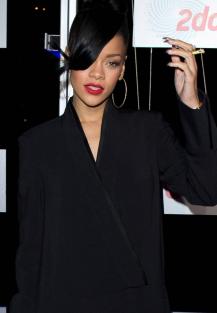A pair of companies developing their own commercial space shuttles are presumably trying to flatten their hair after some rigorous wind tunnel testing. First up, Blue Origin, founded by Jeff Bezos (the guy behind Amazon), a company that's remained pretty quiet on its efforts to shuttle astronauts to the International Space Station. Its Space Vehicle setup will plump for a biconic shape (seen above), with a flattened side and a split flap. According to Blue Origin's president, Rob Meyerson, the shape allows greater volume than traditional designs, but forgo the "weight penalty" of winged craft. Compared to earlier capsules, the Space Vehicle's shape, with its fuselage flap to generate lift, should also give it better control on re-entry to earth.
Juggling for wind tunnel time, Sierra Nevada's Dream Chaser has also been blasted with smoke to test its own air resistance credentials. Its module would lauch from the top of the rocket, and glide (as much as anything that costs this much can) back to earth like NASA's own space shuttles. The Dream Chaser is planning its first flight for this fall. You can check out its more traditional take on the future of space travel after the break -- and decide which of the two you'll want sending your children to the mines.
[Picture credit: Blue Origin, SNC]
Continue reading Commercial space shuttle prototypes fly through wind tunnel testing
Commercial space shuttle prototypes fly through wind tunnel testing originally appeared on Engadget on Mon, 30 Apr 2012 09:32:00 EDT. Please see our terms for use of feeds.
Permalink | Wired | Email this | Comments
Wired | Email this | Comments south korea baron davis duggar family gilbert arenas dexter dexter facebook timeline








 The problem with internet advertising - and there are many - is that while there are plenty of users who interact with ads, the hard part is working out which users are actually the most valuable to advertisers. While the advertising industry normally sends one brand message and blasts it out across all channels, Struq, an advertising platform startup, works out which users show behavioral patterns that make them statistically more likely to purchase. But instead of showing them the one brand message it shows video or display ads most likely to chime with that user. To that end it's attracted the attention of major backers today, with a significant $8.5 million funding round from Reed Elsevier Ventures, Pentech Ventures and Allen & Company LLC.
The problem with internet advertising - and there are many - is that while there are plenty of users who interact with ads, the hard part is working out which users are actually the most valuable to advertisers. While the advertising industry normally sends one brand message and blasts it out across all channels, Struq, an advertising platform startup, works out which users show behavioral patterns that make them statistically more likely to purchase. But instead of showing them the one brand message it shows video or display ads most likely to chime with that user. To that end it's attracted the attention of major backers today, with a significant $8.5 million funding round from Reed Elsevier Ventures, Pentech Ventures and Allen & Company LLC.

